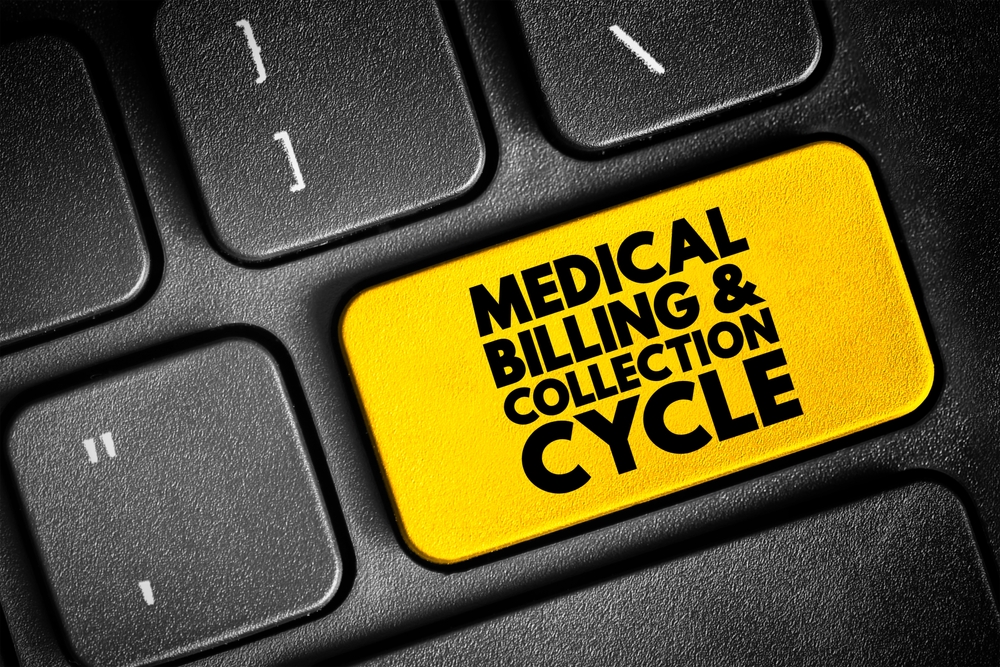Medical billing is the backbone of any healthcare practice’s revenue cycle. It’s a complex process that ensures healthcare providers are reimbursed for the services they provide. But for many practices, especially smaller ones, understanding the nuances of how medical billing works is critical to maximizing revenue and minimizing claim rejections.
1. Patient Registration: The Foundation of Billing
The medical billing begins even before the patient receives care. Patient registration is the first and one of the most important steps, as it sets the stage for accurate billing and claim submission.
During this step, the administrative team collects essential information such as:
- Patient’s full name, contact details, and date of birth
- Insurance provider and policy details
- Relevant medical history, if required for the treatment
Accurate collection of this data is vital, as errors at this stage can lead to claim denials later in the process. Patient registration not only ensures proper treatment documentation but also verifies whether the patient’s insurance plan covers the required services.
2. Insurance Verification: Ensuring Coverage Before Treatment
Once the patient is registered, the next step is healthcare insurance verification. This involves verifying the patient’s insurance coverage to ensure that the services they are seeking are included in their plan.
The verification process typically includes:
- Checking whether the patient’s insurance policy is active
- Confirming which services and treatments are covered under their plan
- Identifying co-payments, deductibles, and out-of-pocket costs
Verifying insurance details before providing services helps avoid denied claims and unexpected bills for the patient. This proactive step ensures that both the patient and the healthcare provider are aware of what is covered and what might require additional authorization.
3. Medical Coding: Translating Services into Billable Codes
Once the patient receives treatment, the next step is professional coding. Coding is a critical component of the medical billing process, as it involves translating the healthcare services provided into standardized codes used for billing.
The two primary code sets used in medical billing are:
- CPT (Current Procedural Terminology) Codes: These codes describe the medical, surgical, and diagnostic services provided to the patient.
- ICD-10 (International Classification of Diseases) Codes: These codes are used to represent the diagnosis and any underlying conditions treated.
Accurate coding is essential to ensure that claims are processed correctly and that providers are reimbursed for the full range of services rendered. Errors in coding are one of the most common reasons for claim denials, making precision a top priority.
4. Charge Entry: Preparing the Bill
Once the services are coded, the billing staff or medical billing software enters these codes into the system as charges. This step involves inputting the data into a claim form that will be submitted to the patient’s insurance company.
The claim form typically includes:
- Patient information (demographics and insurance details)
- Provider details
- Diagnosis codes (ICD-10)
- Procedure codes (CPT)
- Charges for each service provided
Proper charge entry ensures that all services provided are accounted for, which directly impacts the practice’s revenue. Missing or incorrect charges can result in underpayments or delayed reimbursements.
5. Claims Submission: Sending Claims to Insurance Companies
Once the claim is prepared, it is submitted to the patient’s insurance provider for reimbursement. Claims can be submitted either electronically or on paper, though electronic submission is faster and more efficient.
Electronic claims are sent through a clearinghouse, which:
- Reviews the claim for errors
- Ensures the claim is in the correct format for the insurer
- Transmits the claim to the insurance company
Submitting claims in an error-free format is critical for avoiding denials or payment delays. Clearinghouses play a key role in ensuring that claims are sent properly and in a timely manner, reducing the likelihood of rejected claims.
6. Payment Posting: Tracking Payments and Adjustments
After the claim is processed by the insurance company, they will either approve, partially approve, or deny the claim. This leads to the next step: payment posting.
Once the payment is received, it’s essential to post it accurately in the practice’s billing system. Payment posting involves:
- Recording the amount paid by the insurer
- Adjusting the remaining balance for the patient to pay (if applicable)
- Documenting any denials or partial payments from the insurer
Accurate payment posting ensures that the patient’s account is up to date, and that any balances due are reflected correctly.
7. Denial Management: Addressing Rejected Claims
Unfortunately, not all claims are accepted by insurance companies on the first try. In fact, claim denials are a common occurrence in the medical billing process. Denial management is the process of reviewing and resolving denied claims to ensure that providers are paid for their services.
Common reasons for denials include:
- Incorrect coding or missing information
- Lack of medical necessity for the treatment
- Errors in patient or insurance details
When a claim is denied, it’s important to identify the reason, correct any errors, and resubmit the claim promptly. Effective denial management reduces revenue loss and shortens the time between claim submission and payment.
8. Patient Billing: Collecting Remaining Balances
Once insurance payments are received and posted, any remaining balance is billed to the patient. This typically includes co-payments, deductibles, or services not covered by the insurance provider.
To improve collection rates and ensure timely payment, patient billing should be clear and transparent. Billing statements sent to patients should include:
- A detailed explanation of the services provided
- Amount covered by insurance
- The remaining balance due
Many practices now offer online payment portals, which allow patients to pay their bills conveniently. Providing multiple payment options can improve patient satisfaction and accelerate revenue collection.
9. Reporting and Analysis: Evaluating the Billing Process
The final step in the medical billing process is reporting and analysis. Regularly reviewing the performance of the billing cycle helps identify trends, areas for improvement, and potential issues that may be impacting cash flow.
Key metrics to monitor include:
- Denial rates: How many claims are being denied and why?
- Payment timelines: Are claims being processed and paid within an acceptable timeframe?
- Outstanding balances: How much is still owed by patients or insurance companies?
By continuously evaluating these metrics, practices can make informed decisions to optimize their billing processes and improve financial performance.
Conclusion
Medical billing is a complex, multi-step process that requires careful attention to detail at every stage. From patient registration to claims submission and denial management, every step plays a crucial role in ensuring timely reimbursements and a steady revenue stream for healthcare providers. At MedLife MBS, we specialize in handling the intricacies of medical billing, allowing providers to focus on patient care while ensuring a smooth billing cycle. In this guide, we’ll break down how the medical billing process works from start to finish.
Contact us, we specialize in providing comprehensive medical billing services that simplify the billing process and maximize your practice’s revenue. Our team of experts handles everything from claim submission to denial management, allowing you to focus on what matters most—delivering exceptional patient care.


